Exponential Moving Average
The EMA line is a commonly used moving average. But what is the exponential moving average? Let's explore it through the article below
The EMA line is one of the preferred moving averages among stock investors. But what is exponential moving average? How to set exponential moving average in Klarda? We'll delve into these questions in more detail through the article below.
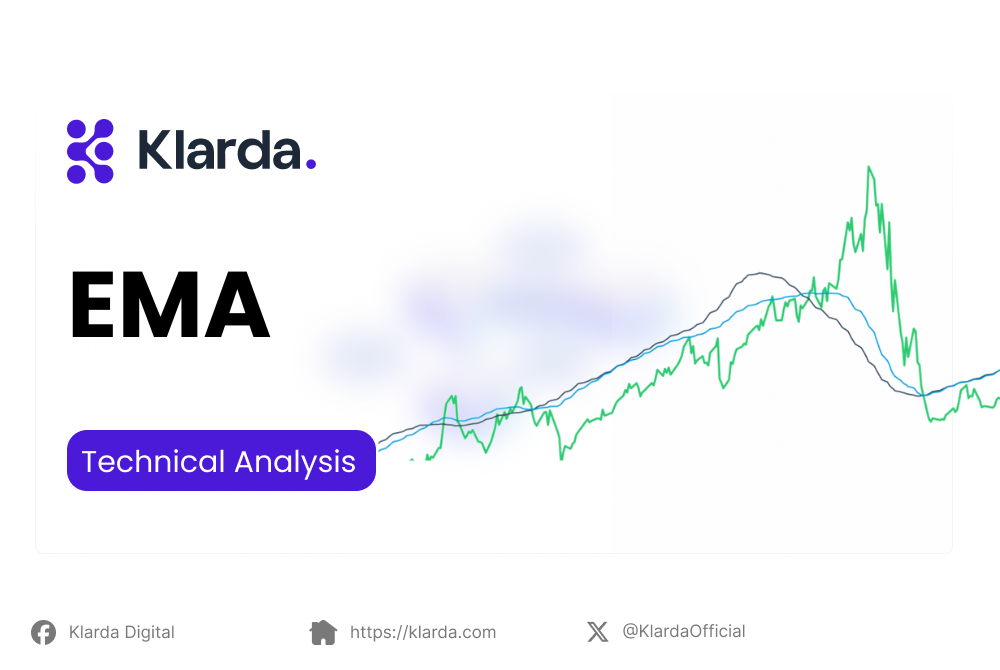
KEY TAKEAWAYS
- EMA, or Exponential Moving Average, is a dynamic indicator reflecting price movements exponentially. It uses a multiplier to generate buy and sell signals based on crossovers and divergences in comparison to the average past price.
- The movement of EMA reflects the shift in price, allowing investors to grasp the current price trend by observing the price movements.
WHAT IS EXPONENTIAL MOVING AVERAGE IN TRADING?
The Exponential Moving Average (EMA) is a dynamically weighted moving average line. It serves as an indicator reflecting price volatility calculated exponentially, using a multiplier to generate buy and sell signals based on crossovers and divergences compared to the average past price.
The EMA's weighted formula captures the price trend in the most recent volatile period, often set at 10 days, 20 minutes, 30 weeks, or any chosen timeframe by investors.
Consequently, the exponential moving average indicator is more responsive to short-term anomalies and provides more accurate results compared to the Simple Moving Average (SMA). This sensitivity allows investors to swiftly and timely react to these fluctuations, providing accurate forecasts.
Furthermore, the EMA aids in identifying the current market trend and determining price support and resistance thresholds.
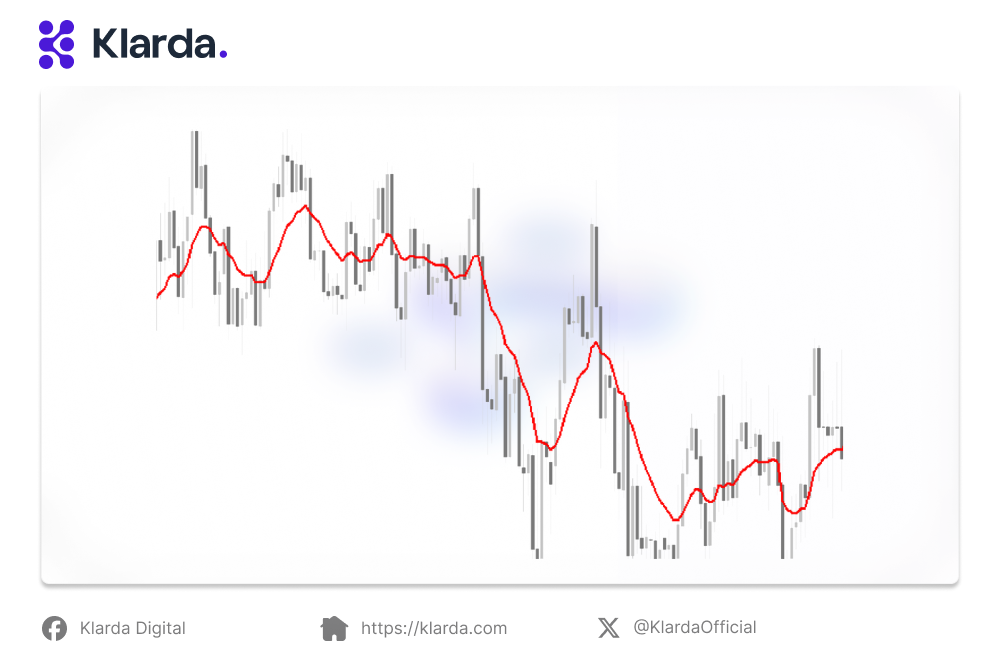
EMA, or Exponential Moving Average, is a dynamically weighted moving average line.
HOW TO CALCULATE EXPONENTIAL MOVING AVERAGE?
Exponential moving average formula is calculated using the formula: EMA = Closing price multiplier + EMA (previous day) (1-multiplier). The multiplier is derived from the formula 2 / (number of observations + 1).
Notably, the difference between simple moving average vs exponential moving average is that the EMA formula involves one additional observation compared to the formula for Simple Moving Average (SMA), which is a straightforward arithmetic average.
For selecting the initial value in EMA calculations, there are two approaches:
- Approach 1: You can start by creating a simple average of the first fixed number (N) and use that value to compute EMA.
- Approach 2: You can use the first data point (usually the closing price) as the initial value and use that to calculate EMA.
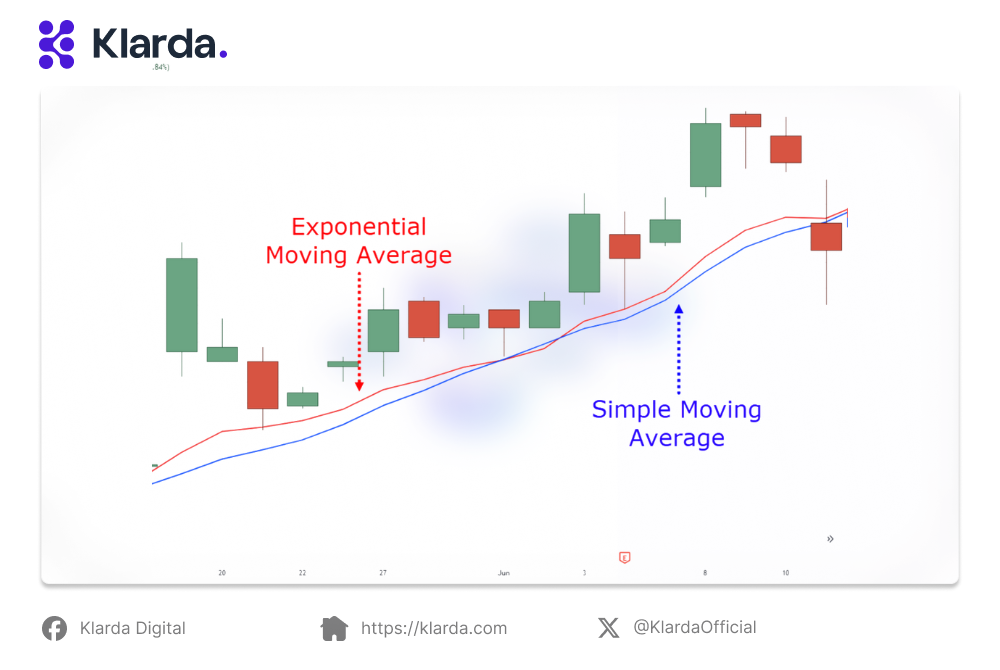
The EMA formula incorporates an extra observation compared to the Simple Moving Average (SMA) formula.
HOW TO USE EXPONENTIAL MOVING AVERAGE?
Commonly used EMA
The movement of EMA reflects the shift in price, allowing investors to grasp the current price trend through price movement observation.
Some commonly used EMAs include:
- Short-term EMA20: When the price line crosses above the EMA20 line, there is a high probability of a short-term price uptrend. Conversely, when the price line crosses below the EMA20 line, the price is likely to experience a short-term downtrend in the near future.
- Medium-term EMA50, EMA100: When the price line crosses the EMA50 and EMA100 lines in an upward direction, it indicates a medium-term price uptrend. If the crossing is in a downward direction, it suggests a medium-term price downtrend in the coming period.
- Long-term EMA200: When the price line crosses upward towards the EMA200 line, there is a high likelihood of a long-term price uptrend. Conversely, a downward crossing towards the EMA200 line suggests a long-term price downtrend in the near future.
Additionally, EMA has the ability to retain price milestones within a cycle. Assuming a short-term market cycle lasts for 20 days, the EMA indicator will remember price points of transactions within that 20-day period. Thus, EMA can quickly update with new prices while preserving old price data for a specific timeframe.
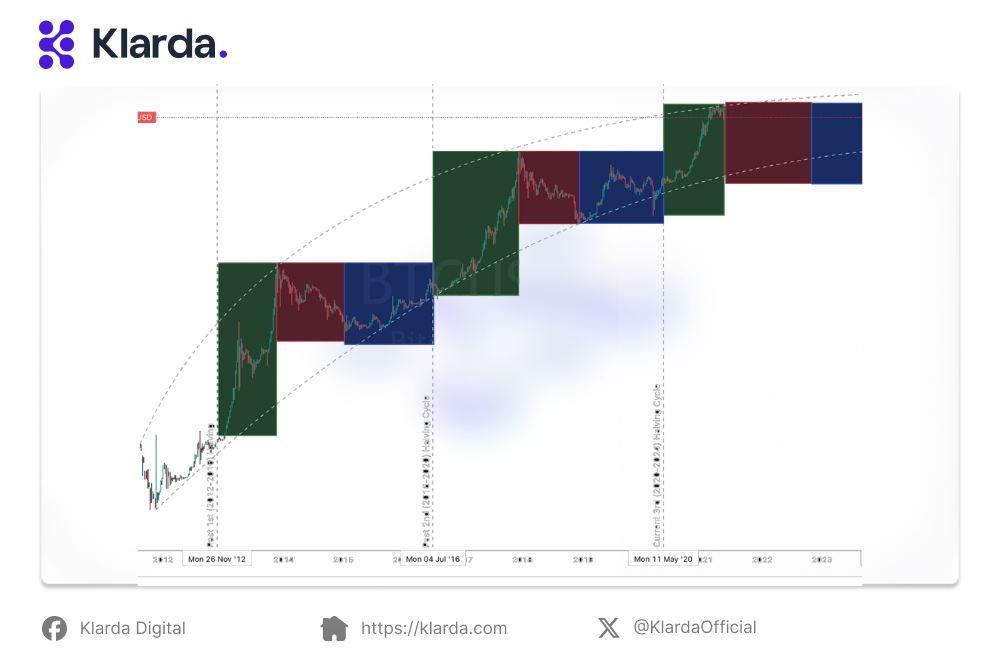
EMA's movement captures price shifts, enabling investors to understand the current price trend through careful observation of price movements.
Accurate Entry Points
Based on EMA indicators, investors can determine precise entry points for trading, as follows:
- When the EMA line slopes upward and the price line, which is initially above this line, begins to show signs of turning downward and intersects with the EMA line, it is an opportune time to place a buy order.
- When the EMA line slopes downward, and the price line, initially below the EMA, starts to turn upward, entering a buy order when the two lines intersect is advisable.
Identifying Support and Resistance Lines
EMA serves a similar purpose to support and resistance lines:
- If the EMA line is in a long-term uptrend but still below the price line, and the price line starts to decrease but bounces back up upon touching the EMA line, the EMA acts as a support line.
- If the EMA line is in a long-term downtrend and above the price line, and the price line increases but immediately reverses upon touching the EMA line, the EMA now acts as a resistance line.
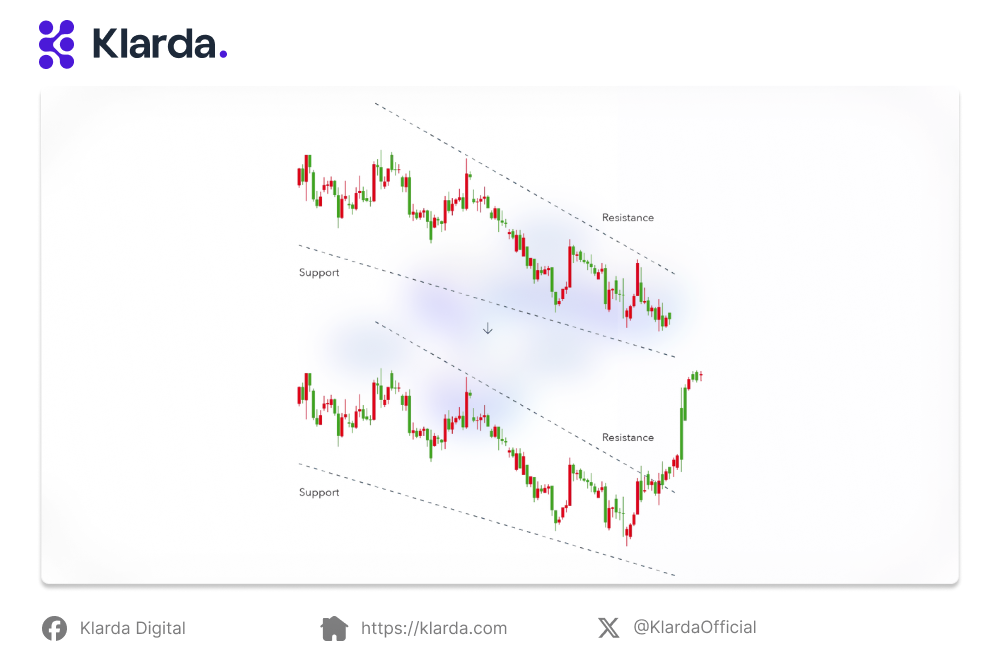
EMA serves a comparable function to support and resistance lines.
HOW TO SET EXPONENTIAL MOVING AVERAGE IN KLARDA?
In practice, you can see that the EMA line plays an extremely crucial role in providing data for investors. Thanks to the EMA line, you can easily make investment decisions that suit your needs.
For new investors, finding a platform that provides accurate and fast EMA lines can be challenging. In such cases, you might prefer Klarda. Klarda is a financial platform focused on providing accurate, continuously updated, and transparent information for cryptocurrency asset owners on EVM networks.
You might wonder, "how to set exponential moving average in Klarda?" No problem! Just log in to Klarda, search for your chosen cryptocurrency, and get not just the EMA line but also a range of other relevant crypto data.
This summarizes all the information we have gathered about the exponential moving average. It's essential data for investors, and understanding it is crucial for everyone involved in trading.
However, please remember that the information provided here is for sharing purposes only. We do not offer any investment advice in this article.
Updated 8 months ago